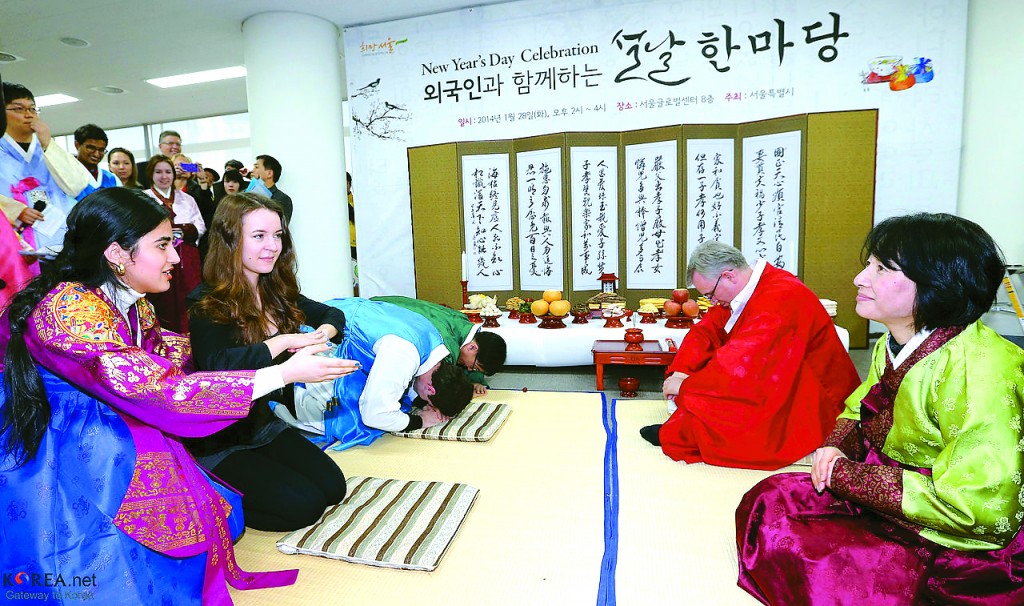
The Korean Lunar New Year is full of traditions that trace back to ancient times. Although not as well known as the Chinese New Year celebrations, which are widely recognizable by the dragon dance, the Korean celebration has its own perks such as traditional wear, special bowing and family games.
Korean traditional clothing is called hanbok, which are worn by both genders. However, there is more emphasis on the women’s outfit because of the significance of the beautiful and vibrant skirt and top. They are worn to honor ancestors; in particular, those that have passed away more recently.
While the adults are busy drinking and talking, the children anticipate the time to do sebeh, which is special traditional bowing. When the time does come, the children face the elders and do a complete bow to the ground. As a result, the elder will respond to this gesture by giving the child, pocket money. Quite often, a kid will jokingly bow more than once, and exhibit aegyo (acting cute), to receive even more money. Even among Korean Americans who do not necessarily do the complete traditional celebration, kids do not miss the chance to do sebeh. In an actual sebeh ceremony, children will wear hanbok when they bow to their elders.

Last but not least, family games are highly commended for bringing the family together with both laughter and competition. The most popular game played during the New Year is yut nori, which is a board game that has been around for more than 100 years. There is no limit to the number of players. The game board faces all the players, and all players start at the beginning, with four tokens. The point is to get all four of your tokens around the board. Instead of using a dice to determine the forward spaces on the board, yut nori uses four wooden sticks that are flat on one side and round on the other. There are five possible outcomes after throwing the sticks into the air. When the stick hits the floor and only one flat side is shown, it is called “Do” and one can move one place. When it is two flat sides, it is called “Gae” and one can move two places. When it is three flat sides, it is called “Geol” and one can move three places. The two most anticipated outcomes not only lets one advance quickly but also allows the chance for another throw. When it is four flat sides, it is called “Yut” and one can move four places and throw again. When none of the flat sides are shown but instead four round sides, it is called “Mo” and one can move five places and throw again.
Although it may not sound all that interesting based on these instructions, the game does start to heat up once players “eat” the other players’ tokens, which is similar to the game of “Sorry.” Even among my family of five, it often gets intense, with cheers and frustration. If you are familiar with the TV programs, “Infinite Challenge,” “Running Man,” or “1 Day 2 Nights,” the next game should also ring a bell.
Jegichagi is a traditional outdoor game that simply requires one to keep the jegi in the air by kicking it with his or her feet. The game is usually played one-on-one; therefore, the goal is to have the highest number of consecutive kicks to win the game. Although the game is losing its popularity, most are still aware of the game, thanks to popular Korean variety shows and celebrities. “Infinite Challenge” and “Running Man,” the two programs watched by numerous people in both Korea and all over the world, play jegichagi occasionally as a part of a mission.
Hanbok, sebeh, yut nori and jegichagi are not the only traditional aspects of the Korean Lunar New Year, they are the few that Koreans still take into a lot of consideration when planning the day with the family.
by Eunice Kim




